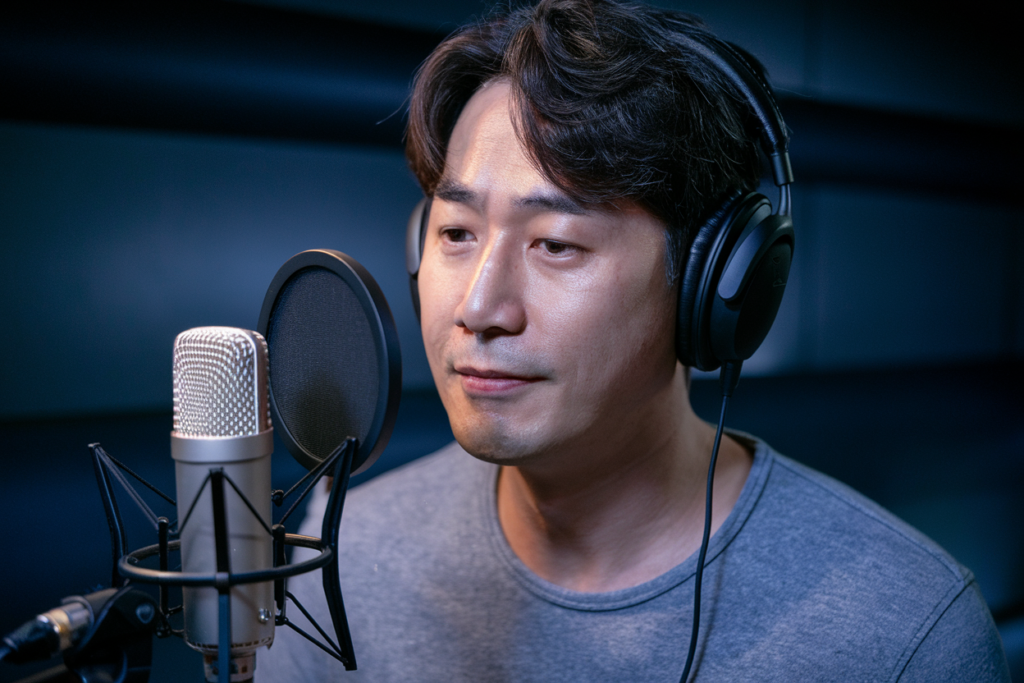Key Takeaways
- Regional Dialects Matter: Korean consists of various regional dialects, each reflecting unique cultural identities and expressions that impact pronunciation, vocabulary, and grammar.
- Pronunciation Variations: Differences in how sounds are articulated can lead to misunderstandings; for example, the Seoul dialect is crisper compared to Busan’s softer intonations.
- Lexical Differences: Vocabulary can vary significantly between regions, affecting word meanings and usages. Familiarity with these distinctions enhances communication effectiveness.
- Cultural Influence on Language: Regional slang and expressions enrich the language landscape in Korea, making it essential for effective engagement with local audiences.
- Media’s Role in Language Perception: Television shows and pop culture highlight regional dialects, influencing public perception. Understanding these nuances is crucial for voice artists targeting diverse demographics.
- Improved Communication Skills: Recognizing regional variations equips speakers to connect authentically with native speakers, enhancing both personal interactions and professional opportunities in voiceover projects.
Ever wondered why the Korean you hear in Seoul sounds so different from what’s spoken in Busan? The differences in Korean across regions are more than just accents; they reflect rich cultural identities and unique local expressions. Understanding these variations can deepen your appreciation for the language and enhance your communication skills.
Overview of Korean Language
Korean, known as ”한국어” (Hangul), consists of various regional dialects that reflect the diverse cultural landscapes across Korea. These dialects significantly impact pronunciation, vocabulary, and even grammar. Understanding these differences enhances communication and enriches your appreciation for the language.
The standard form of Korean is based on the Seoul dialect. It’s widely used in media and education. However, when you venture outside the capital, you’ll encounter variations unique to each region. For instance, Busan’s dialect features distinct intonations and expressions that can confuse those unfamiliar with it.
In Jeolla Province, speakers often use softer consonants and a more relaxed speech style compared to their counterparts in Gyeongsang Province, where speech tends to be sharper and more clipped. This variety showcases how geography influences language development.
Regional differences aren’t just accents; they embody local culture and identity. Embracing these nuances offers deeper insights into Korean society. When you’re aware of these distinctions, you improve your ability to connect with native speakers.
If you’re considering exploring voiceover opportunities in Korean or engaging with its rich linguistic heritage, recognizing these regional traits can elevate your projects significantly. Tailoring your approach according to the specific dialect ensures authenticity and resonates better with audiences across different regions.
Regional Variations in Korean
Korean showcases a rich tapestry of regional variations that reflect the cultural diversity across Korea. Understanding these differences enhances your interactions, especially if you’re involved in voiceover projects targeting specific audiences.
Dialects and Accents
Korean features several dialects, each with unique accents. The Seoul dialect serves as the standard form, prevalent in media and education. In contrast, Busan’s accent often surprises those unfamiliar with it; it carries distinctive intonations that can change meaning dramatically. Jeolla Province presents another variation where speakers use softer consonants compared to the sharper sounds found in Gyeongsang Province. For anyone aiming to connect authentically with local audiences or showcase their voice talent in different regions, recognizing these nuances is crucial.
Lexical Differences
Lexical choices differ significantly among regions. Certain words may hold different meanings or usages based on location. For example, vocabulary related to food varies widely; traditional dishes might be referred to by entirely distinct names depending on whether you’re in Seoul or Jeolla Province. If you’re working as a voice artist for regional content, being aware of these lexical differences can enhance authenticity and relatability—qualities that resonate well with listeners and clients alike.
By embracing these regional distinctions in Korean, you position yourself as an informed communicator capable of engaging diverse audiences effectively—whether through everyday conversation or professional voiceovers tailored to specific locales.
Phonetic Differences
Phonetic variations in Korean across regions significantly impact communication. These nuances not only enrich the language but also reflect local culture and identity.
Pronunciation Variations
Pronunciation differs notably between regions. For instance, speakers from Seoul articulate sounds more crisply than those from Busan, where vowels can stretch longer and consonants soften. This difference may confuse listeners unfamiliar with regional dialects. Additionally, certain sounds are pronounced distinctly; for example, the ”ㅅ” sound tends to sound more like ”sh” in Jeolla Province compared to its clearer articulation in Gyeongsang Province. If you’re working as a voice talent or engaging in voiceover projects that require regional accuracy, understanding these pronunciation nuances enhances your authenticity.
Intonation Patterns
Intonation patterns also vary regionally and can change meaning entirely. In Busan’s dialect, rising intonation at the end of statements often conveys familiarity or friendliness, while the same pattern might indicate a question elsewhere. Similarly, Jeolla speakers use a softer rhythm that contrasts sharply with the sharper delivery typical of Gyeongsang Province speakers. Recognizing these intonational differences is crucial for voice artists aiming to capture genuine expressions during performances or recordings. Mastering these subtleties can elevate your work as a voice actor and help you connect deeply with diverse audiences through authentic communication.
Influence of Culture on Language
Cultural influences significantly shape the Korean language, creating distinct regional dialects that reflect local identities and lifestyles. These influences manifest in slang, expressions, and even media portrayals, making regional variations more than just linguistic differences.
Regional Slang and Expressions
Regional slang adds vibrancy to Korean dialects. Each area boasts unique phrases that locals use daily. For instance, Busan’s colorful expressions can surprise those unfamiliar with its charm. In contrast, Jeolla Province might favor softer language styles that convey warmth and familiarity. Understanding these nuances is vital for anyone looking to connect authentically with native speakers or engage in voiceovers tailored to specific regions. Using the right slang not only enhances communication but also showcases your awareness of local culture.
Language in Media and Pop Culture
Media plays a crucial role in shaping language perceptions across Korea. Television shows, movies, and music often highlight regional dialects, influencing how people view different areas’ languages. Popular dramas set in Seoul may showcase the standard dialect while neglecting Busan’s lively intonations or Jeolla’s melodic speech patterns. As a voice artist or actor, recognizing these differences can elevate your performances by allowing you to adapt your delivery style based on target audiences’ cultural backgrounds. Engaging with pop culture helps you capture the essence of each dialect accurately—essential for effective storytelling through voiceovers.
Understanding cultural influences on language enriches your ability to communicate effectively across regions while enhancing your appeal as a voice talent ready to deliver authentic performances tailored to diverse audiences.
Conclusion
Understanding the regional differences in Korean enriches your grasp of the language and its cultural nuances. By appreciating dialects from places like Seoul, Busan, and Jeolla Province, you can connect more authentically with native speakers.
These variations offer insights into local identities and lifestyles that are often reflected in unique expressions and vocabulary. Whether you’re engaging in casual conversation or pursuing voiceover opportunities, recognizing these distinctions will enhance your communication skills.
Embracing the rich tapestry of Korean dialects not only improves your fluency but also deepens your appreciation for Korea’s diverse heritage. This knowledge equips you to engage effectively with varied audiences across regions.
Frequently Asked Questions
What are the main differences between the Seoul and Busan dialects of Korean?
The Seoul dialect, used as the standard form of Korean, is characterized by clear pronunciation and specific vocabulary. In contrast, the Busan dialect features unique intonations and softer consonants, which can change meanings of words. These variations reflect distinct cultural identities that enrich communication.
Why is understanding regional dialects important for learning Korean?
Understanding regional dialects enhances appreciation for the language and improves communication skills. It allows learners to engage authentically with native speakers, grasp local expressions, and navigate conversations more effectively across different regions in Korea.
How do phonetic differences impact communication in Korean?
Phonetic differences, such as pronunciation and intonation variations among regions, can affect meaning significantly. For example, certain sounds may be pronounced differently or have varying stress patterns. Recognizing these nuances helps avoid misunderstandings during conversations.
What role does culture play in shaping regional dialects in Korea?
Culture heavily influences Korean regional dialects through local slang, expressions, and lifestyle reflections. Each area’s unique phrases enhance communication while showcasing awareness of local customs and traditions—vital for anyone engaging deeply with diverse audiences.
How can voice artists benefit from understanding these regional distinctions?
Voice artists can deliver more authentic performances by mastering regional distinctions in pronunciation and intonation. Understanding cultural nuances ensures their work resonates with diverse audiences, making their portrayals richer and more relatable across different locales.







